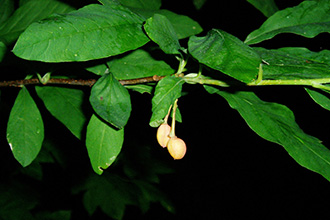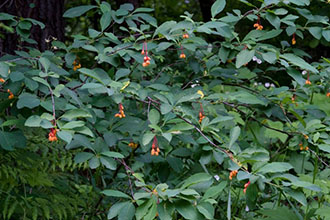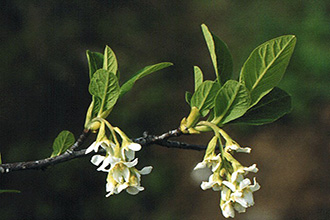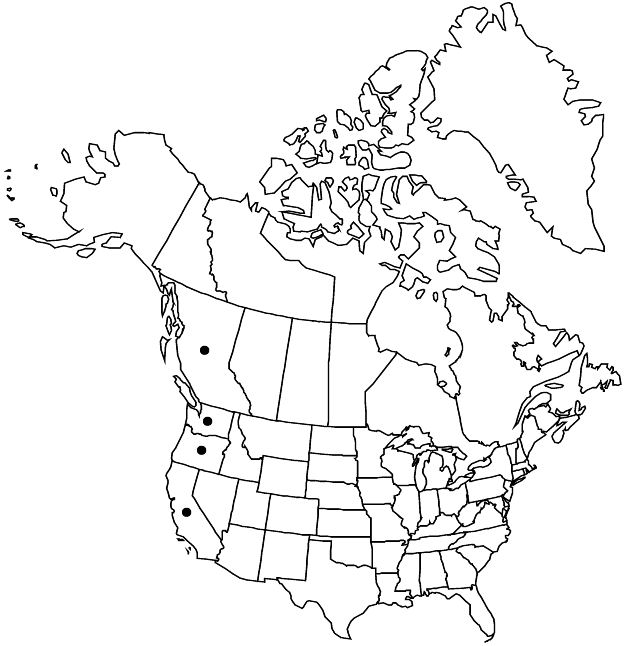Taxonomy: Kingdom - Plantae (plants). Subkingdom - Tracheobionta (vascular plants). Superdivision - Spermatophyta (seed plants). Division - Magnoliophyta (flowering plants). Class - Magnoliopsida (dicotyledons). Subclass - Rosidae. Order - Rosales. Family - Rosaceae (rose). Genus - Oemleria Rchb. Species - Oemleria cerasiformis (Torr. & A. Gray) Landon.
Ecology: Indian plum is found from the Pacific coast to the western slopes of the Cascades and the northern Sierra Nevada. It is one of the earlier flowering woody plants in the Pacific Northwest and provides good cover and food for birds and other animals. The flowers are foul smelling, part of a fly-pollination syndrome.
In the WFDP: Indian plum is incredibly rare in the WFDP, with only two stems (which are two leaders of the same tree) above 1 cm at DBH that are tagged.



